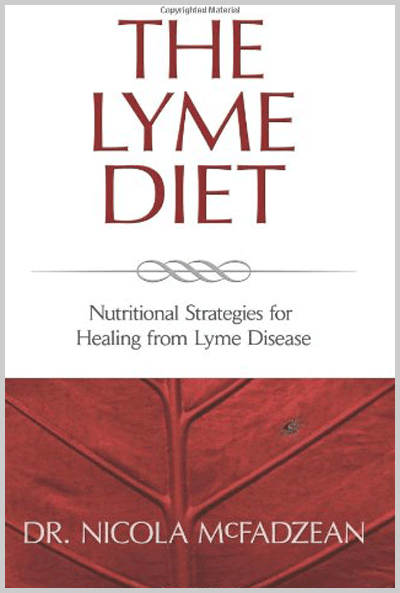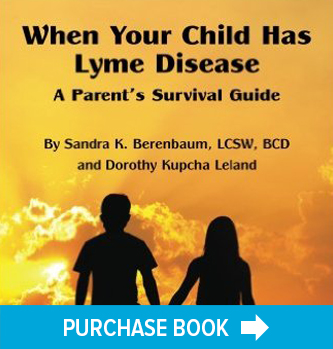The Lyme Diet – Nutritional Strategies for Healing from Lyme Disease
Reviewed By: Dorothy Kupcha Leland, LymeDisease.org
Improving diet may be one of the most important steps a Lyme patient can take on the road back to health.
Changing the way you eat can be difficult enough for people who are generally healthy. Trying to transform dietary habits when you’re chronically ill might seem insurmountable. Yet, according to Lyme-literate naturopath Dr. Nicola McFadzean, improving diet may be one of the most important steps a Lyme patient can take on the road back to health.
In her book, The Lyme Diet: Nutritional Strategies for Healing from Lyme Disease (Legacy Line Publishing, 2010), McFadzean examines what she calls three pillars of Lyme treatment. These are: killing bugs; strengthening the body (supporting the immune system, improving digestion); and reducing other stressors (heavy metal toxicity, hormone and other imbalances in the body, inadequate nutrition.)
Writes McFadzean: “The role of nutrition is central not so much in the actual bug-killing, but in the underlying strength and resilience of your health. Immune support, inflammation management, hormone regulation and detoxification functions can all be vitally influenced by your nutritional intake.”
The Lyme diet she recommends is first and foremost anti-inflammatory. According to McFadzean, the chronic inflammation associated with Lyme disease contributes to joint pain, swelling, fatigue, brain fog and headaches, and inhibits healthy cell function. She advises against highly pro-inflammatory foods like gluten and dairy, and in favor of “good fats” like fish and flax oil for their anti-inflammatory properties.
The Lyme diet supports the immune system. This generally means eating fruits, vegetables, and high quality proteins to give you the raw materials your body needs. It means avoiding sugar, which suppresses the immune system, and other substances your body may react to.
The Lyme diet promotes healthy digestive function. McFadzean says 70% of the immune system resides in the gut. So it’s important to maintain a healthy balance of gut flora and avoid “leaky gut” syndrome, which can cause so many problems for Lyme patients.
She discusses how different foods affect the thyroid and adrenal systems, and which foods can help your body detoxify.
In the “Putting it all Together” section of the book, she shows you how to implement the Lyme diet in everyday life. Menu suggestions, recipes, natural substitutes for sugar, and how to deal with food cravings are among topics covered.
In “Tools and Resources,” she discusses related laboratory tests, practical home treatments, nutritional supplements and a number of alternative therapies.
In the book’s foreword, Lyme specialist Steven Harris, MD, observes that nutrition “plays a vital role in offsetting side effects of antibiotics, bolstering the immune system, aiding detoxification, decreasing inflammation, healing the gut, alkalinizing the blood and preventing candida overgrowth.”
The Lyme Diet gives patients a road map for eliminating detrimental foods and emphasizing helpful ones. It’s an important compendium of nutritional information for anyone dealing with the challenge of Lyme disease. Highly recommended.


















